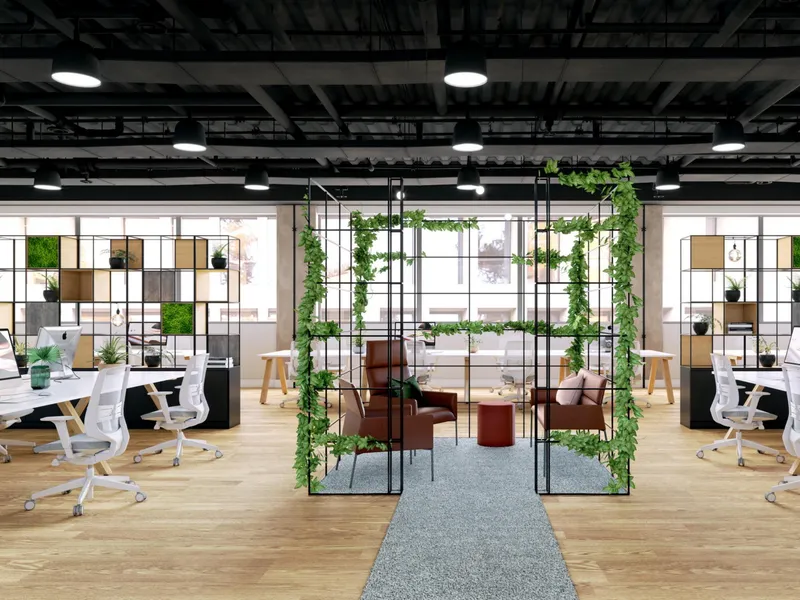In the fast-paced world of business, where innovation and productivity often take center stage, it’s crucial to consider the impact our choices make on the environment. One area gaining increased attention is office furniture and its role in creating sustainable workspaces. “Furniture with a Purpose” is not just a trendy phrase; it embodies a commitment to conscious choices that contribute to a greener future. In this article, we’ll navigate the vast world of sustainable office solutions, exploring the benefits, trends, and considerations for businesses looking to make a positive impact through their furniture choices.
The Environmental Imperative:
The traditional office setup often involves mass-produced furniture made from non-renewable materials, contributing to deforestation, excessive energy consumption, and the generation of substantial waste. As awareness of climate change and environmental degradation grows, businesses are seeking alternatives that align with their corporate social responsibility initiatives.
Sustainable office furniture addresses these concerns by utilizing eco-friendly materials, responsible manufacturing processes, and a focus on durability and recyclability. By choosing purposeful furniture, businesses can significantly reduce their ecological footprint and contribute to the preservation of natural resources. Explore this site and discover more about sustainable office furniture options and the positive impact they can have on both the environment and your workplace.
Materials Matter:
A fundamental aspect of sustainable office solutions is the careful selection of materials. Traditional office furniture often relies on materials like particleboard, which involves the heavy use of adhesives and may release harmful chemicals into the environment. In contrast, sustainable options prioritize materials such as reclaimed wood, bamboo, recycled steel, and other environmentally friendly alternatives.
Reclaimed wood, sourced from old buildings or furniture, not only reduces the demand for fresh timber but also adds a unique character to the furniture. Bamboo, a rapidly renewable resource, is known for its strength and versatility, making it an excellent choice for desks, chairs, and shelving units. Recycled steel, when used in office furniture frames, contributes to reducing the carbon footprint associated with metal production.
Durability and Longevity:
One key principle of sustainable office solutions is the emphasis on durability. Furniture designed to withstand the rigors of daily use not only extends its lifespan but also reduces the frequency of replacements. Investing in high-quality, long-lasting furniture is not only environmentally responsible but can also result in cost savings over time.
Modularity and Adaptability:
The concept of “furniture with a purpose” goes beyond environmental considerations; it also involves creating adaptable and modular workspaces. This approach allows businesses to easily reconfigure office layouts as needs change, reducing the need for constant furniture replacements. Modular furniture promotes a more flexible and dynamic workspace, contributing to employee well-being and collaboration.
Trends in Sustainable Office Design:
The shift towards sustainability has given rise to exciting trends in office design. Biophilic design, for instance, incorporates natural elements into the workspace, such as plants and natural light, promoting a healthier and more productive environment. Furniture with built-in green features, like planter boxes or recycled materials, seamlessly integrates sustainability into the office aesthetic.
Additionally, the rise of circular economy principles has influenced office furniture design, encouraging manufacturers to create products that are easily disassembled and recycled at the end of their life cycle. This cradle-to-cradle approach minimizes waste and maximizes the reuse of materials.
Considerations for Businesses:
When navigating the world of sustainable office solutions, businesses should consider several factors to make informed choices:
- Certifications: Look for certifications such as FSC (Forest Stewardship Council) for wood products and GREENGUARD for low-emission furniture. These certifications indicate adherence to environmental and health standards.
- Supplier Transparency: Choose suppliers who provide transparent information about their materials, manufacturing processes, and ethical practices. This ensures that the entire supply chain aligns with sustainable principles.
- Employee Well-being: Sustainable office furniture not only benefits the environment but also contributes to a healthier workplace. Ergonomically designed chairs, adjustable desks, and other features promote employee well-being and productivity.
- End-of-Life Considerations: Evaluate the recyclability and ease of disassembly of office furniture. Choosing products designed with the end of their life cycle in mind ensures a smoother transition into the recycling process.
Conclusion:
“Furniture with a Purpose” is a powerful mantra for businesses aiming to create sustainable, purposeful workspaces. As the demand for environmentally conscious practices continues to grow, the world of sustainable office solutions offers a myriad of options for businesses to make a positive impact. By prioritizing materials, durability, modularity, and employee well-being, companies can embrace a new era of office design that not only aligns with their values but also contributes to a healthier planet for future generations.




